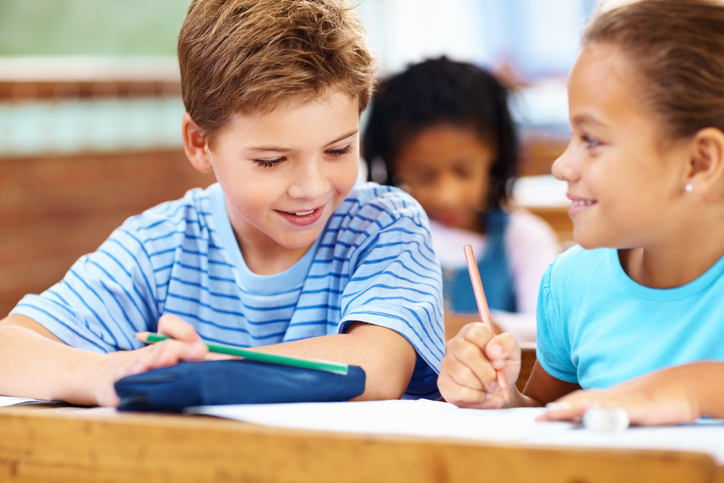The Power of Sharing
Why Student Collaboration Boosts Academic and Personal Achievement
Written By: Carmen Smith, Elementary Math Specialist, Georgia

Student collaboration in the classroom is a powerful learning technique that has so many beneficial outcomes. Encouraging students to work together can lead to deeper understanding for all students, and in turn boost mathematical achievement. Classroom and small group collaboration can increase personal confidence and self-esteem. When students work together, they build the skills needed to be successful in life.
A Deeper Understanding
Encouraging students to work together can lead to deeper understanding of whatever topic they are working on. When students collaborate, they have the opportunity to connect their ideas with other students’ ideas, which requires them to develop a higher level of understanding. Students need to apply what they know and to make sense of what others share. When students work together, they get opportunities to make connections between ideas, which is inherently valuable for them.
When you connect with someone else’s ideas, you enhance your brain, your understanding, and your perspective. This can be valuable to all learners and thinkers. Students are given the opportunity to talk through their thinking and ideas, and through this process can clarify their thoughts and allow for deeper understanding. When my students work together on Exemplars tasks, they light up. I see their engagement increase and their excitement build. The mathematical conversations are rich and full of energy. I see them tackle misconceptions together and collaborate to make sense of the problems and to solve them efficiently.
"When my students work together on Exemplars tasks, they light up. I see their engagement increase and their excitement build. The mathematical conversations are rich and full of energy."
Boosts Students' Confidence
Such collaboration can also help boost confidence and self-esteem. Group projects can maximize educational experience by not only demonstrating the material, but also improving social and interpersonal skills. Students learn how to work with various types of learners and develop their leadership skills. This is a true-life skill! By keeping an open mind and being willing to trust students with their learning, teachers give students ownership over their learning. This helps to create a classroom culture that values every student's strength.
This type of school community fosters the belief that everyone can learn from one another. Students feel like their thoughts are valuable and are more willing to share. When we work with Exemplars, I often allow my students to work in groups or pairs. This gives the students the support and experience they need to solve problems multiple ways. They have wonderful math discussions and model their thinking for one another. It is such a powerful way to learn, benefitting all students involved.
Important Life Skills
Working together builds the skills needed to be successful in life. Collaboration facilitates a style of learning that promotes a sense of shared responsibility among the students. This student-led learning style nurtures the students' abilities to challenge peers' ideas and scrutinize and articulate how their method or ideas may be similar or different from another student’s. Part of the reason learning independently can be challenging is because students find strategies or information difficult and then think they are alone in their struggle to understand the material. When students work together and discover that everybody experiences challenges in learning, an important change takes place. This is a critical moment for students, and one that helps them know that learning is a process for everyone and that obstacles are common. They're learning to be more proactive; they're learning how to depend on their peers. When they become adults, they will already know how to work with people and draw out their strengths because of these shared opportunities. Collaboration is vital for learning, for brain development, and for creating equitable outcomes. It also helps to establish interpersonal connections.
As team members identify and explore their own strengths, weaknesses, and skills, they gain an understanding of how combining the thoughts of several individuals contributes to greater success than can be achieved by one person alone. Like the idea that two or three heads are better than one, educational researchers have found that through peer instruction, students teach one another by addressing misunderstandings and clarifying misconceptions. By allowing students to collaborate in class, teachers provide opportunities to discuss, learn, and grow from one another. Collaboration increases understanding and helps students grow as confident and competent learners. As American poet and motivational speaker Mattie Stepanek said, “Unity is strength … where there is teamwork and collaboration, wonderful things can be achieved.”


